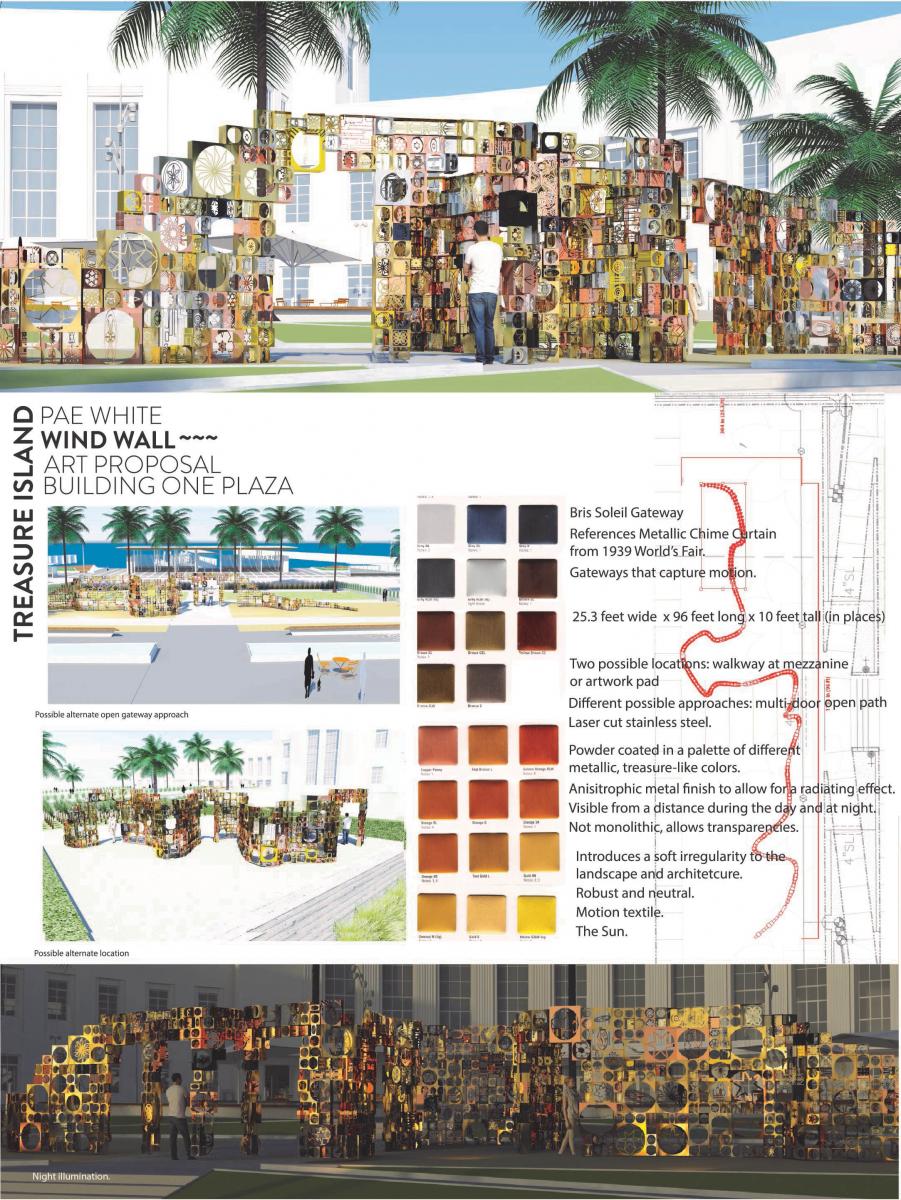 Looking at the history of Treasure Island, especially the 1939 World’s Fair, I recognized an opportunity to remake a lost artwork. Behind the massive sculpture of the mythological figure Pacifica in the Court of the Seven Seas, there was something referred to to in the promotional video as a 100’ Silver Chime Curtain which “tinkled the tranquil song of peace…” I would like to propose a variation of that, give it depth, orient it horizontally in a serpentine layout, and in addition to creating sound, it would have numerous of spinning elements of different sizes harnessing the wind coming off the bay. An assortment of pattern and openwork would allow for a good amount of transparency to take advantage of the view of the ocean, the city and the landscape while at the same time creating pockets of intimate spaces.
Looking at the history of Treasure Island, especially the 1939 World’s Fair, I recognized an opportunity to remake a lost artwork. Behind the massive sculpture of the mythological figure Pacifica in the Court of the Seven Seas, there was something referred to to in the promotional video as a 100’ Silver Chime Curtain which “tinkled the tranquil song of peace…” I would like to propose a variation of that, give it depth, orient it horizontally in a serpentine layout, and in addition to creating sound, it would have numerous of spinning elements of different sizes harnessing the wind coming off the bay. An assortment of pattern and openwork would allow for a good amount of transparency to take advantage of the view of the ocean, the city and the landscape while at the same time creating pockets of intimate spaces.
The proposal board references 2 possible locations for the Wind Wall. One in which the wall is split by the path to the plaza, each side approximately 12 feet tall by 1 foot thick and 48 feet long, the other in the open space to the south, but as a single continuous serpentine wall 12 feet by 1 foot and approximately 96 feet long. However, understanding that there are a number of contingencies with the site I am open to developing the options with Andrea Cochran and her team.
The material for the wall would be laser-cut stainless steel, powder-coated in transparent tonal, neutral metallic, even “treasure-like” colors of gold, silver, copper, bronze etc. Some of the finishes would be mirror polish and some would be brushed for an anisitrophic finish to allow a feeling of light “radiation”. ADM Works (http://www.adm-works.com) has helped my studio with multiple projects using metal and harnessing the wind.
In terms of working roles, Pae White Studio would explore possible layouts for the site chosen, then develop and finalize the design, at which point we would present it to the Art Commission. Once approved, we would then work with ADM who would engineer the piece and strategize the fabrication to facilitate assembly on site. During installation, Pae White Studio would be present to ensure proper placement and orientation and to verify that the piece is working as designed.
View larger image of proposal.
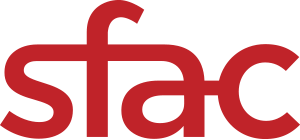
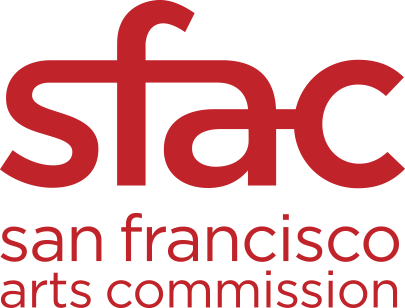

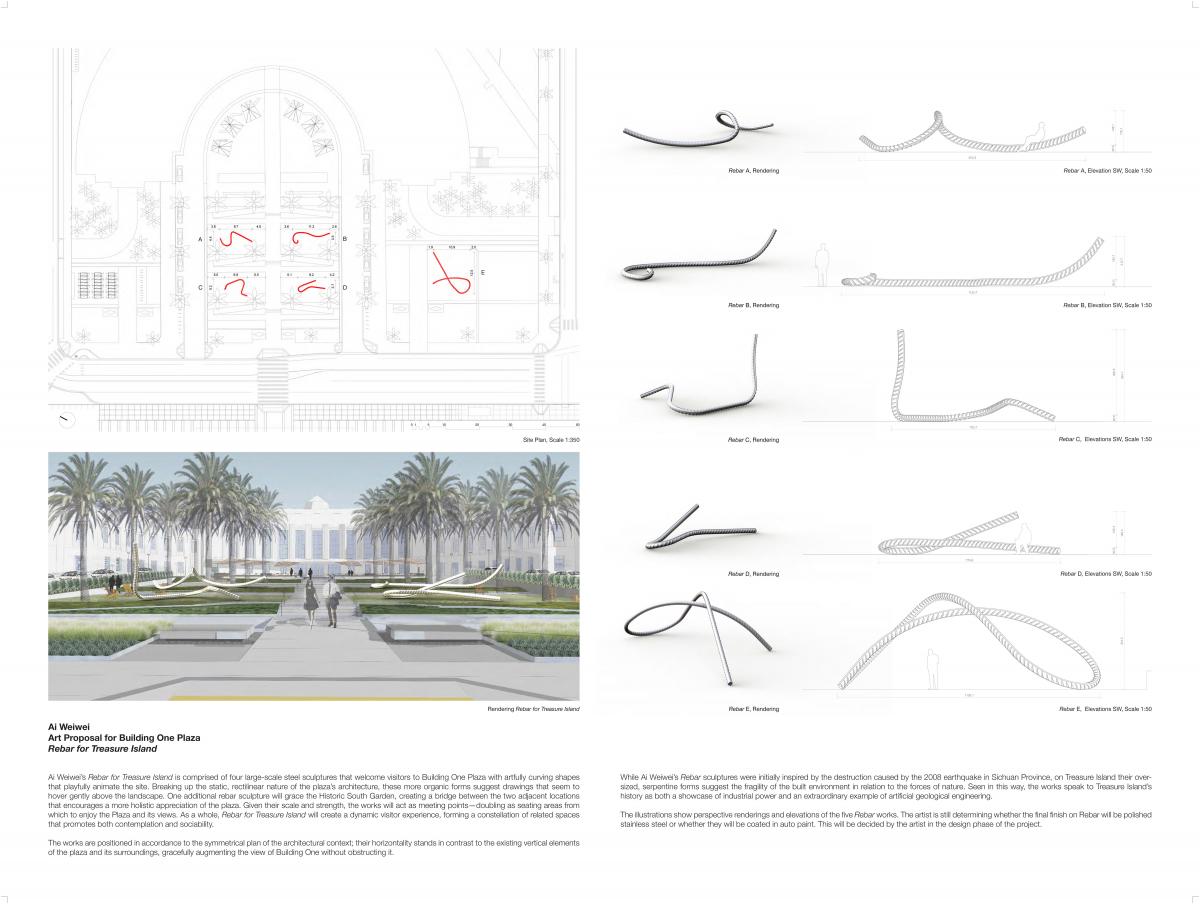 Ai Weiwei’s Rebar for Treasure Island is comprised of four large-scale steel sculptures that welcome visitors to Building One Plaza with artfully curving shapes that playfully animate the site. Breaking up the static, rectilinear nature of the plaza’s architecture, these more organic forms suggest drawings that seem to hover gently above the landscape. One additional rebar sculpture will grace the Historic South Garden, creating a bridge between the two adjacent locations that encourages a more holistic appreciation of the plaza. Given their scale and strength, the works will act as meeting points—doubling as seating areas from which to enjoy the Plaza and its views. As a whole, Rebar for Treasure Island will create a dynamic visitor experience, forming a constellation of related spaces that promotes both contemplation and sociability.
Ai Weiwei’s Rebar for Treasure Island is comprised of four large-scale steel sculptures that welcome visitors to Building One Plaza with artfully curving shapes that playfully animate the site. Breaking up the static, rectilinear nature of the plaza’s architecture, these more organic forms suggest drawings that seem to hover gently above the landscape. One additional rebar sculpture will grace the Historic South Garden, creating a bridge between the two adjacent locations that encourages a more holistic appreciation of the plaza. Given their scale and strength, the works will act as meeting points—doubling as seating areas from which to enjoy the Plaza and its views. As a whole, Rebar for Treasure Island will create a dynamic visitor experience, forming a constellation of related spaces that promotes both contemplation and sociability.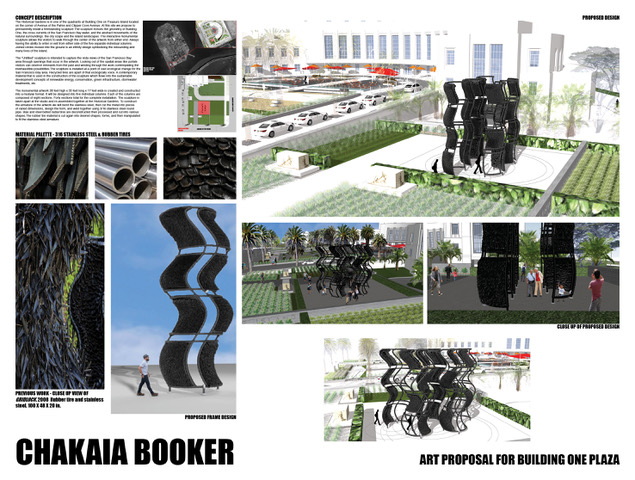 The Historical Gardens is in one of the quadrants at Building One on Treasure Island located on the corner of Avenue of the Palms and Clipper Cove Avenue. At this site we propose to permanently install a freestanding sculpture. The sculpture echoes the geometry of Building One, the cross currents of the San Francisco Bay water, and the abstract movements of the natural surroundings. The city scape and the Island landscapes. The interactive monumental sculpture allows the visitors to walk through the center of the artwork from either end. Always having the ability to enter or exit from either side of the five separate individual columns. Joined circles incised into the ground is an infinity design symbolizing the rebounding and many lives of the island.
The Historical Gardens is in one of the quadrants at Building One on Treasure Island located on the corner of Avenue of the Palms and Clipper Cove Avenue. At this site we propose to permanently install a freestanding sculpture. The sculpture echoes the geometry of Building One, the cross currents of the San Francisco Bay water, and the abstract movements of the natural surroundings. The city scape and the Island landscapes. The interactive monumental sculpture allows the visitors to walk through the center of the artwork from either end. Always having the ability to enter or exit from either side of the five separate individual columns. Joined circles incised into the ground is an infinity design symbolizing the rebounding and many lives of the island. Looking at the history of Treasure Island, especially the 1939 World’s Fair, I recognized an opportunity to remake a lost artwork. Behind the massive sculpture of the mythological figure Pacifica in the Court of the Seven Seas, there was something referred to to in the promotional video as a 100’ Silver Chime Curtain which “tinkled the tranquil song of peace…” I would like to propose a variation of that, give it depth, orient it horizontally in a serpentine layout, and in addition to creating sound, it would have numerous of spinning elements of different sizes harnessing the wind coming off the bay. An assortment of pattern and openwork would allow for a good amount of transparency to take advantage of the view of the ocean, the city and the landscape while at the same time creating pockets of intimate spaces.
Looking at the history of Treasure Island, especially the 1939 World’s Fair, I recognized an opportunity to remake a lost artwork. Behind the massive sculpture of the mythological figure Pacifica in the Court of the Seven Seas, there was something referred to to in the promotional video as a 100’ Silver Chime Curtain which “tinkled the tranquil song of peace…” I would like to propose a variation of that, give it depth, orient it horizontally in a serpentine layout, and in addition to creating sound, it would have numerous of spinning elements of different sizes harnessing the wind coming off the bay. An assortment of pattern and openwork would allow for a good amount of transparency to take advantage of the view of the ocean, the city and the landscape while at the same time creating pockets of intimate spaces.
Opportunity For Public Comment
Public Comment Period Closed on April 13, 2018, 5 p.m.